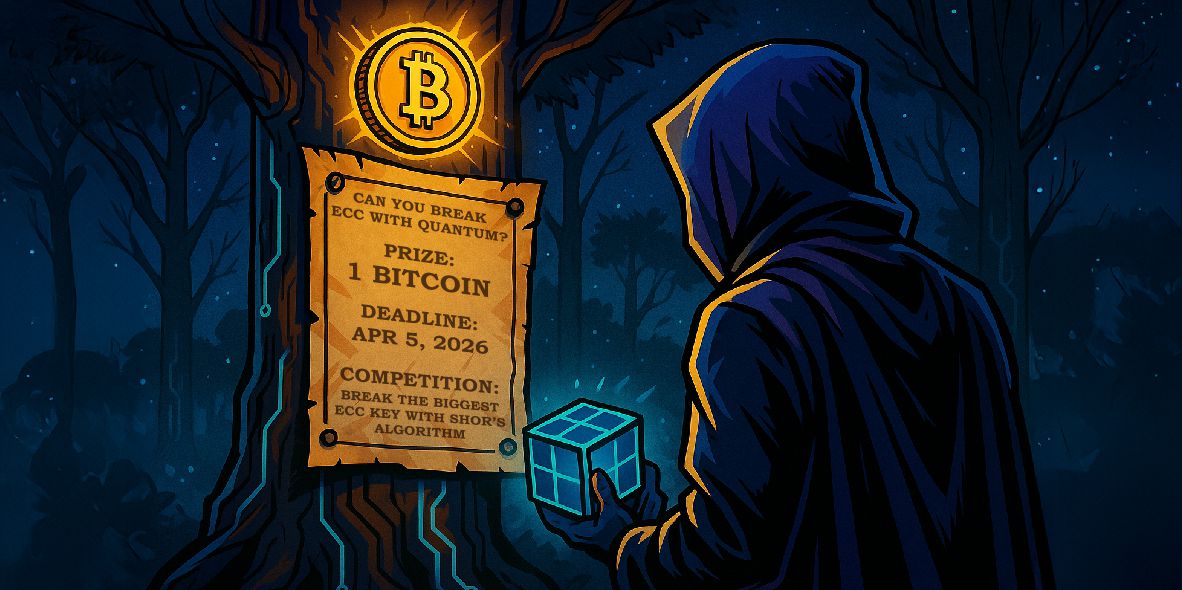Key Takeaways:
- 1 Bitcoin (BTC) Bounty: Project Eleven offers 1 BTC bounty to crack Bitcoin’s quantum defense using Shor’s Algorithm.
- Quantum Doomsday Test: Targets Bitcoin’s ECDSA security—6.2M BTC ($500B) currently vulnerable if quantum tech advances.
- Global Wake-Up Call: Contest runs until 2026, pushing researchers to prove quantum risks before they become real threats.
The Million-Dollar Question: Is Bitcoin Quantum-Proof?
Project Eleven just upped the ante in crypto’s quantum arms race. Their Q-Day Prize dares researchers to do the impossible: break elliptic curve cryptography (ECC) using Shor’s algorithm on a quantum computer. The reward? A cool 1 BTC. But the real prize? Proof that Bitcoin’s bedrock security model could crumble overnight.
This isn’t theoretical anymore. With Google’s Willow chip solving in minutes what supercomputers need millennia to crack, and PsiQuantum raising $750M for photonic breakthroughs, quantum threats are inching from sci-fi to reality.
Why ECC Is Crypto’s Achilles’ Heel
Bitcoin’s Elliptic Curve Digital Signature Algorithm (ECDSA) is the Fort Knox of crypto—until it isn’t. Shor’s algorithm, if run on a powerful enough quantum machine, could reverse-engineer private keys from public addresses. Project Eleven’s contest uses small 25-bit keys as a test run, but the implications are massive:
- $500B at Risk: 6.2M BTC sit in “quantum-vulnerable” wallets with exposed public keys.
- The 2,000-Qubit Threshold: Experts estimate that’s the magic number to crack Bitcoin’s 256-bit encryption.
- No Cheating Allowed: Submissions must use pure quantum methods—no classical shortcuts.
A Transparent Countdown to Q-Day
Unlike shadowy government quantum projects, this challenge is out in the open. “We’re turning speculation into measurable risk,” says Project Eleven CEO Alex Pruden. The rules are simple:
- Gate-Level Implementation: Prove Shor’s algorithm can solve the elliptic curve discrete logarithm problem.
- Full Disclosure: Winning code and methods go public—no black-box solutions.
- Deadline: April 2026: A ticking clock for both quantum engineers and crypto developers.
The contest echoes historic cryptographic challenges like RSA’s 1991 factoring tests, which shaped today’s encryption standards. But this time, the stakes are higher: Bitcoin’s survival.
What This Means for Crypto’s Future
While a 25-bit crack won’t doom Bitcoin tomorrow, could it be a fire drill for the inevitable? The National Institute of Standards and Technology (NIST) is already standardizing post-quantum cryptography, but blockchain networks lag behind. Projects like Ethereum and Cardano are exploring quantum-resistant alternatives, yet migration would be a logistical nightmare.
Summing Up
Project Eleven’s 1 BTC bounty isn’t just a prize, it’s a warning shot. Whether the winner emerges in 2026 or quantum supremacy takes longer, one truth is clear: Crypto’s “set it and forget it” security era could be ending. The question isn’t if quantum will disrupt blockchain, but when – and whether the industry will be ready. For now, all eyes are on the qubits.



